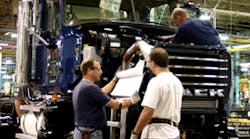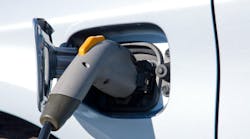HAGERSTOWN, MD. Sten-Ake Aronsson, senior vp of Volvo Powertrain North America, understands that many fleets may wonder how similar are the Volvo and Mack branded engines produced here at AB Volvo’s U.S. engine plant.
The facility has been manufacturing Mack engines since 1961 and is now gearing up to begin domestic production of Volvo D-11, D-13, and D-16 engines for Volvo Trucks North America.
“The engine brands [Mack and Volvo] share a lot of components – engine blocks, crankshaft, pistons, etc.,” he said during a press tour held here this week to show off the results of $150 million worth of new investments in the plant. “We don’t split the [production] line into Mack and Volvo-specific engines until late in the process.”
But Aronsson is firmly convinced that fleet owners don’t really care how truck engines are built, whether they share similar components, or where those components come from – be that Brazil, Mexico, Sweden, or the U.S. He said what truck owners care about today are results.
“What do the owners want? They want an engine that provides good durability and reliability, with long service intervals and excellent fuel economy,” Aronsson explained. “The other key is application. They don’t care if a Mack engine shares the same crankshaft with a Volvo engine. What they want to know is if the torque outputs and horsepower ratings match the needs of the job they expect their trucks to perform.”
So while the green-painted Volvo D-11, D-13 and D-16 engines are built in the same Hagerstown factory on the same line by the same 1,700 UAW workers as their Mack MP7, MP8, and MP10 red-painted brethren, it’s the results those engines produce that will ultimately matter to the trucking market, according to Aronsson.
“It’s about delivering the right engine,” he said. “A highway engine will need far less low-end torque than a unit destined for a refuse truck. Conversely, it will need more torque on the high end to sustain highway speeds at the most fuel-economic level, somewhere between 1,300 and 1,400 rpms. It’s all about the results, not the components.”



